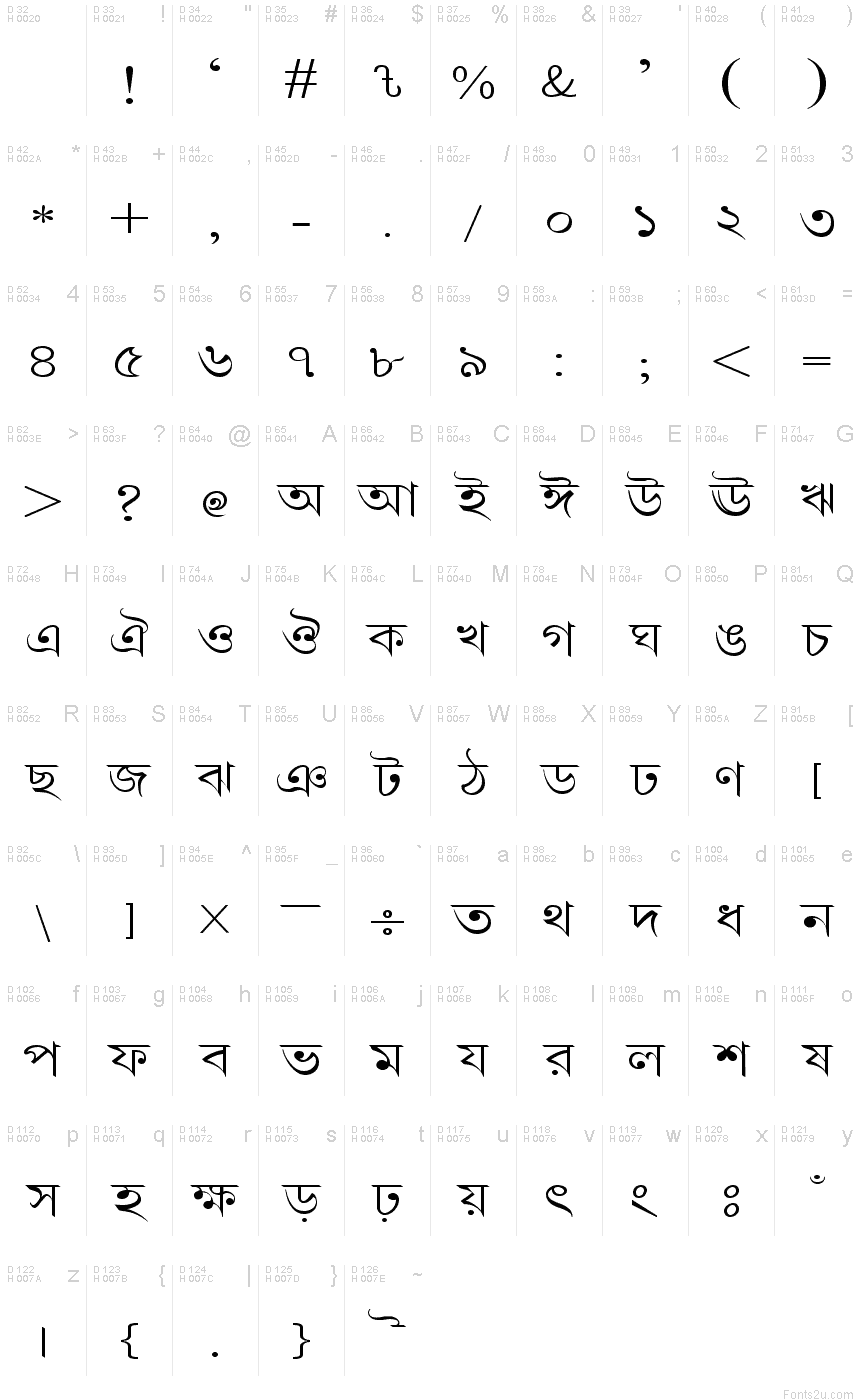Bangla Language & Script:.Linguistic History: Bengali along with twoother cognate languages, Assamese and Oriya, as well as Magadhi, Maithiliand Bhojpuri in south-east zone forms a linguistic group. Their immediatesource can be traced back to the Magadhi Prakrit or Eastern Prakrit whichwas brought to this area from Magadh (or Bihar) and the language of Gauda-Bangawith other eastern languages developed from this through Magadh Apabhramsa,Genetically Bengali is derived from Indo-Aryan (IA) or the Indic sub-branchof the Indo-Iranian branch of the Indo-European (IE) family of languages.The literary documents of IA language in Indian Peninsula can be classifiedinto three periods according to their linguistic changes. (i) Old Indo-Aryan(OIA) (1500 BC/1200 BC - 600 BC) (ii) Middle Indo-Aryan (MIA) (600 BC-1000 AD) (iii) New Indo-Aryan (NIA) (1000 AD - Present Time)All these three have some substages. Bengali belongs to the NIA whichwas broadly derived from MIA. But there are also some written documentslike Donha of Tantric Buddhists, Nathists, Saivaties or Jainas which canbe traced as a transitional phase form MIA to NIA which is mentioned asAvahattha (avahattha) or Proto New Indo Aryan.The inadequacy of written documents of immediate Pre-Bengali period isone of the most important limi-tations to find out the gradual changefrom Apabhramsa, Avahattha to the historic period of Bengali (16th centuryAD). There is no document of Magadhi Apabhramsa except a small inscription.The Avahattha literature are also not sufficient. The earliest literaryrecord in Bengali is the Caryacaryaviniscaya.

Till the 16th century, allthe documents are copies of the original with varying degrees of correctness.After the 16th Century AD, the documents have more or less survived tilltoday. On the basis of these documents, Bengali has three distinct periods:1.Old Bengali: AD 950/1000 - AD 1200/13502.Middle Bengali: AD 1350 - AD 1800(i)Early Middle Bengali AD 1350 - AD 1450/1600(ii)Late Middle Bengali AD 1600 - AD 18003.Modern Bengali: AD 1800 - today.Style: Almost all early literary documentsbefore 1800 AD are in poetry. A type of prose is available in personalletters, property deeds and other official documents, which are not somuch remarkable for the study of prose style. Prose as a literary mediumof compositions, emerged only in AD 1800.In this language differencebetween spoken and written style is a known fact to scholars.
In spiteof poetic form of early Bengali literature the degree of difference betweenthese two was not so high. Just before nineteenth century, a gap was foundwhich has produced the present sadhu (stand-ard or chaste) and calit (colloquial)dialects.Major difference in sadhu andcalit Bengali is in the pronominal forms, finite and nonfinite verb, indiclinablesand adverbs, use of tatsama (Sanskrit) words, formation of compounds,word orders etc. When two styles are mixed, special mistake appears whichis known as guru-candali error. Such error should be avoided by writers.However, modern writing style is in Chalit form and Guru-Chandali formrarely occurs.Bengali Dialect: Proper investigation ofthe dialect study has not been done systematically till today. Accordingto some of the received features, the following dialects have been distin-guished.1.Radhi: in Central West Bengal2.Jhadkhandi: in South-west of West Bengal3.Bangali: in South-east West Bengal4.Varendri: in North Bengal of West Bengal5.Kamrupi: in North-East Bengal of West BengalBut the Language Division of the Census Depart-ment has given the listof dialects based on linguistics ie. Descriptions covering the entireeastern region of the sub-continent, with emphasis on West Bengal.Main Divisions:A. In Bangladesh:1.

Northern Bengali2. Eastern Bengali3.
North-eastern BengaliB. In West Bengal:4.West Bengal5. South West BengalFor West Bengal, the division is:(a) East-Central (Presidency Division)(b) West-Central (24 Paraganas, Hooghly,Bardhaman, and East Bankura districts)(c) North-Central (Murshidabad, Nadia andMalda districts)(d) East-South-Western (Medinipur district)(e) West-South-Western (West Bankura andold Manbhum districts)Bengali Script: The word script/alphabet(lipi in Bengali) came from the Sanskrit lip meaning 'to plaster' or 'toapply'. In ancient India, writings were normally done by scribing on palmleaves with a stylus and then applying ink on it. The word lipi probablyoriginated from this method of applying layers of ink on leaves.The aim of the historians of script has so far been to minutely followthe gradual modification of the letter forms in the course of time andto discuss in the epigraphic records, a curious species of palaeographicchronometer for dating otherwise un-datable inscriptions. Studies in Bengalipalaeography made by R.D. Banerji and D.N.
Chakravarty reveal the sametendecy of using the mor-phology of script as a tool for history.Till recently, early scholars are of the opinion that the art of writingin India dates back to the period of Asoka (3rd century BC), when inscriptionswere engraved in two different scripts, which are known as Brahmi andKharoshti. These are mainly of Sumerian origin.
Shree Lipi Bengali Fonts Free Download
AAT (Apple Advanced Typography) based Unicode Bangla fonts are required to use Bangla-অঙ্কুর for typing. Unfortunately, there is no Bangla font preinstalled up to Mac OS X 10.6 (Snow Leopard).Till today, there are only 2 open source bangla fonts available for Mac.
Bengali Lipi Font Online
Those two fonts do not work properly on Mac OS X 10.6. On the other hand, OpenType fonts are not supported up to Mac OS X 10.6.To resolve this problem, Bangla-অঙ্কুর converted some OpenType Bangla Fonts into AAT-OpenType Hybrid fonts. These fonts are specially suitable to use as WOFF fonts. Because, these fonts will render correctly in Windows, Linux and also Mac platform.To download the fonts please click on the preview images below.